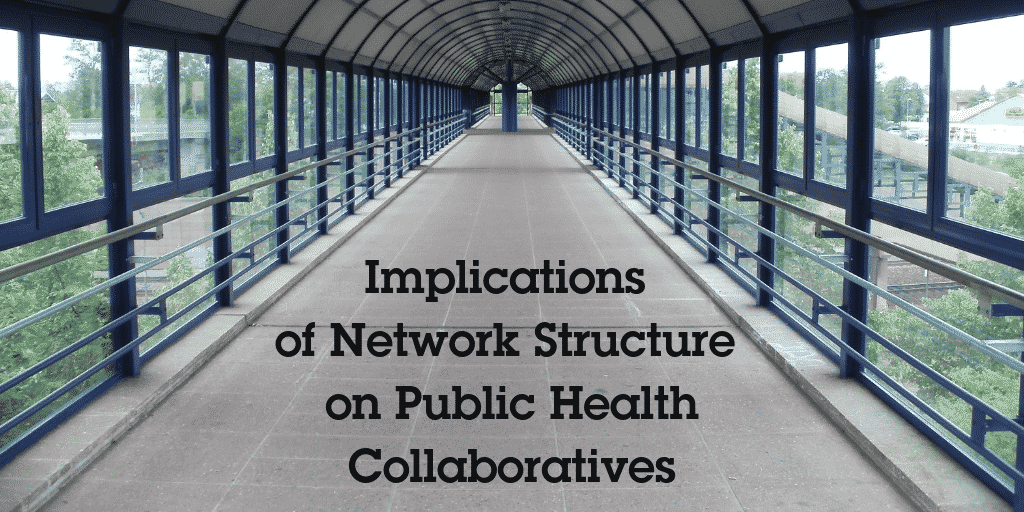
Interorganizational collaboration is an essential function of public health agencies. These partnerships form social networks that involve diverse types of partners and varying levels of interaction. Such collaborations are widely accepted and encouraged, yet very little comparative research exists on how public health partnerships develop and evolve, specifically in terms of how subsequent network structures are linked to outcomes. A systems science approach, that is, one that considers the interdependencies and nested features of networks, provides the appropriate methods to examine the complex nature of these networks. Applying Mays and Scutchfields’s categorization of “structural signatures” (breadth, density, and centralization), this research examines how network structure influences the outcomes of public health collaboratives. Secondary data from the Program to Analyze, Record, and Track Networks to Enhance Relationships (www.partnertool.net) data set are analyzed. This data set consists of dyadic (N = 12,355), organizational (N = 2,486), and whole network (N = 99) data from public health collaborations around the United States. Network data are used to calculate structural signatures and weighted least squares regression is used to examine how network structures can predict selected intermediary outcomes (resource contributions, overall value and trust rankings, and outcomes) in public health collaboratives. Our findings suggest that network structure may have an influence on collaborative-related outcomes. The structural signature that had the most significant relationship to outcomes was density, with higher density indicating more positive outcomes. Also significant was the finding that more breadth creates new challenges such as difficulty in reaching consensus and creating ties with other members. However, assumptions that these structural components lead to improved outcomes for public health collaboratives may be slightly premature. Implications of these findings for research and practice are discussed.
Keywords coalitions, community health promotion, evaluation, health promotion, network analysis, quantitative methods, systems science




